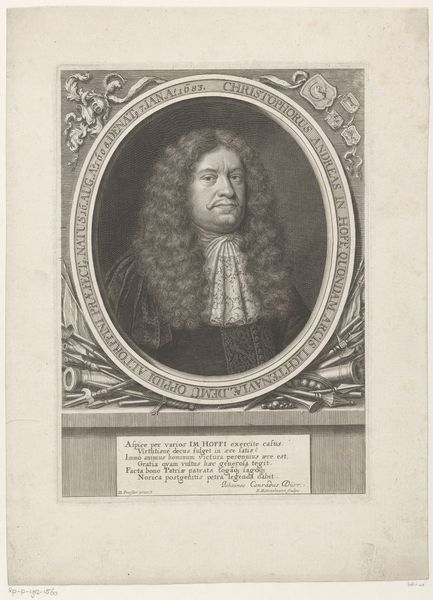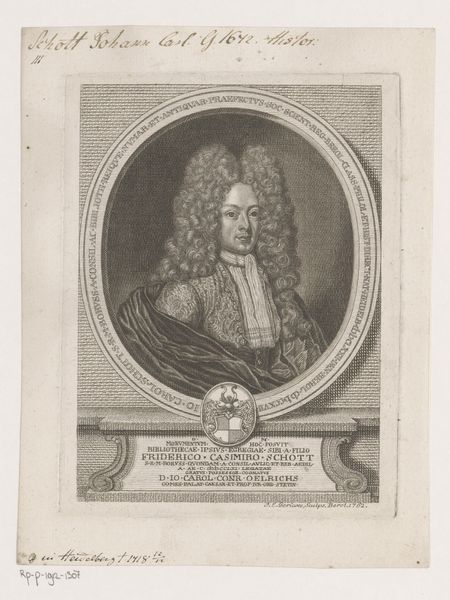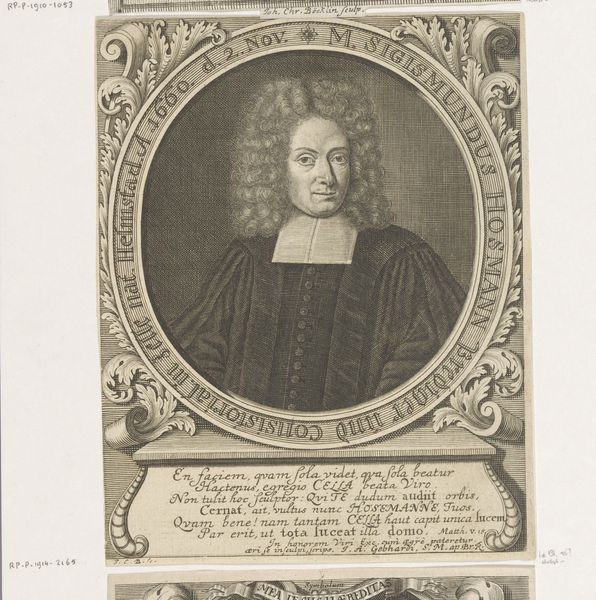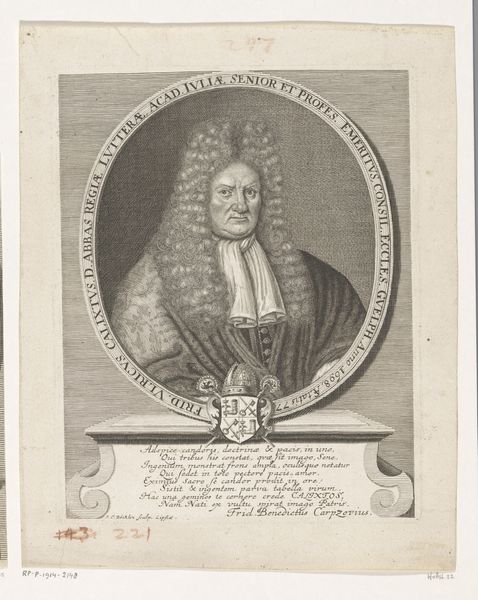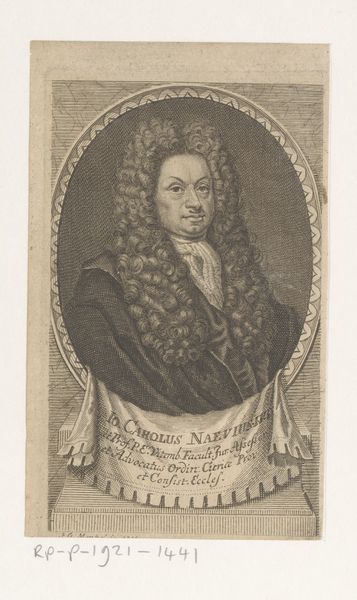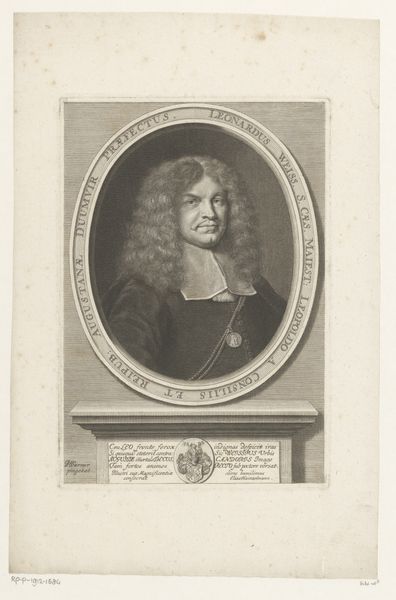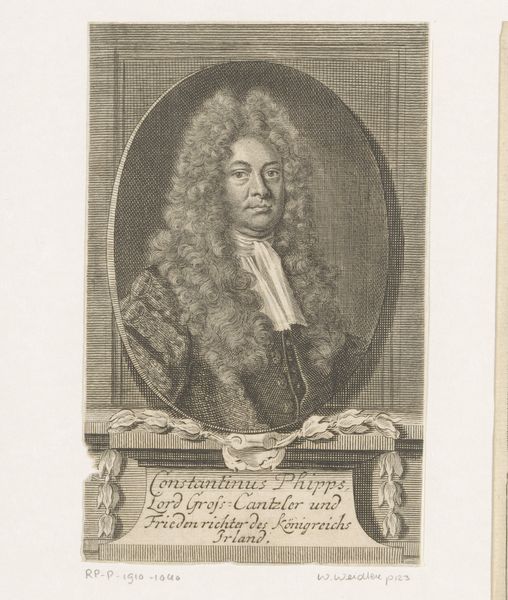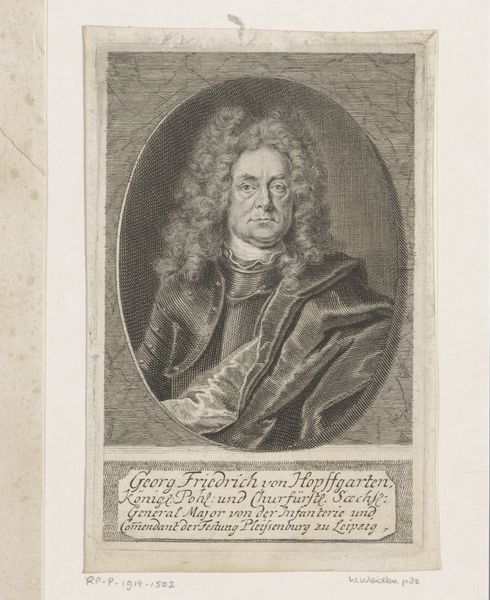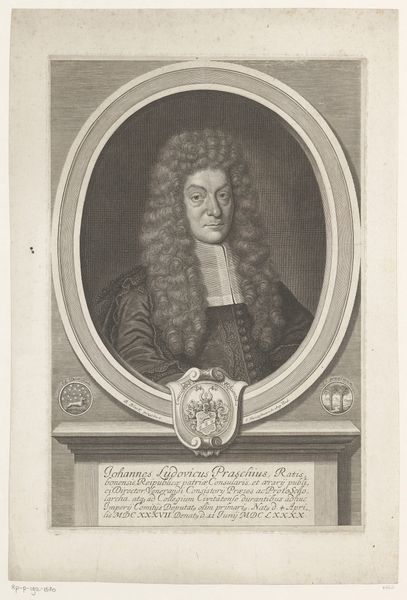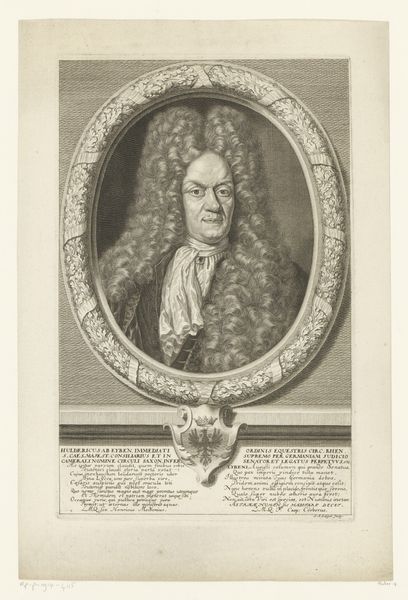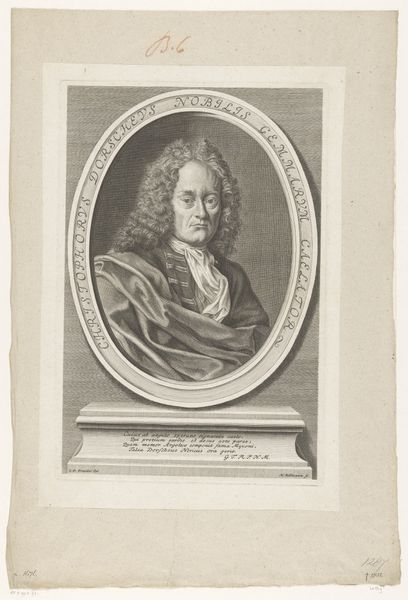
print, metal, engraving
#
portrait
#
baroque
# print
#
metal
#
history-painting
#
engraving
Dimensions: height 334 mm, width 234 mm
Copyright: Rijks Museum: Open Domain
Curator: Welcome. Before us is a print created between 1704 and 1733, a portrait of Georg Wolfgang Wedel by Martin Bernigeroth, currently housed at the Rijksmuseum. Editor: My first thought? Power. Look at that wig! It just screams established authority and an almost theatrical confidence. The details rendered through engraving on metal feel austere, adding another layer of seriousness. Curator: Indeed, the texture is fascinating. The artist skillfully uses engraving to differentiate textures, the density of lines defining form while manipulating light. Observe how the controlled hatching shapes the soft, almost cascading curls, juxtaposed with the smoother tones across the subject's face. Editor: That control speaks volumes about societal expectations. A carefully constructed identity – the performative nature of aristocracy. The inscription below…Georg Wolfgang Wedelius, physician. Not just a portrait of a man, but the carefully curated image of a public figure whose very existence impacts power structures. We see an ennobled presentation of scholarly, upper-class identity, designed to project authority through careful execution of very fine detail in dress, in demeanor, and presentation. Curator: Notice the composition within the oval. It is both formal and dynamic, isn’t it? Wedel's gaze engages directly, fostering a connection while simultaneously maintaining an aura of eminence. The background provides tonal structure, creating just enough spatial ambiguity and pushing Wedel forward. Editor: Yes, but look again: It’s a performance supported by power structures of the era. The history literally inscribed—almost branded—into this piece points at a time when prestige was tightly bound with male scholarly achievements and presentation of the material self. The 'history painting' aspect becomes less about specific events, but about embedding identity within a historical continuum of prestige and accomplishment. Curator: Well, considered within the language of Baroque portraiture, its emphasis is about clarity, balance, and refined artistry using linear structures to frame form... Editor: Exactly. Those stylistic elements were often leveraged by the elites, allowing portraiture to become a critical device for cementing power, underscoring the very select possibilities within art making and presentation itself. Curator: In its very materiality—metal plate worked into fine lines—a narrative unfolds through the visual language of artistic form... Editor: ...a form complicit in shaping perceptions, reinforcing systemic advantages through artistic representation and controlled aestheticism. An intricate lens into past biases etched in visual culture, for sure.
Comments
No comments
Be the first to comment and join the conversation on the ultimate creative platform.

